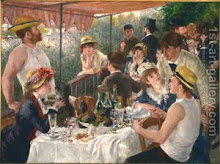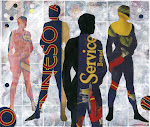Have you always wanted
to learn how to draw? Are you interested in brushing up on drawing basics?
Whether you’re looking for lessons on drawing for beginners or beginner
sketching tips to improve your art, the experts at Artists
Network have you covered. These drawing exercises to download include
all the fundamental step by step sketching tips you need to get started. You
can download these lessons right now and embark on a whole new journey of
artistry. There are 26 free beginner drawing techniques offered in these free
beginner sketching lessons, which can help you learn how to draw a cylinder,
sphere, cube, or circle, and ways to use these skills to advance in your
sketching adventure.
Learning to sketch can
be quite a daunting process, but with these 26 free step by step sketching
lessons you will pick up the basics in no time. One of the first steps of
simple drawings is mastering the art of drawing shapes. The cube, the cylinder,
and the sphere are the fundamental shapes an artist must learn in order to achieve
a deeper understanding of all forms when learning to draw. This drawing for
beginners tutorial offers step by step art lessons for beginners, easy drawing
exercises for all, and a great way to improve your technique.
Part
1: Cylinder Drawing by Jon deMartin
Drawing shapes
correctly will greatly ease and enhance the rendering of most natural objects
in your drawings. The cylinder, which is a combination of cube and sphere
drawing, is the perfect shape to learn how to sketch first. Learning to draw
cylinders is essential, particularly in a still life, because an artist is
continually confronted with ellipses found in items such as a plate, bowl,
glass of wine or any other cylindrical man-made form. There are also many
cylinders in figure drawing.
Drawing Circles and
Ellipses: The Foundations of Cylinders
Before you can become
a cylinder drawing expert, you must first learn how to sketch an ellipse and
properly construct a circle. Circle drawing can be difficult without proper
guidance, but with Jon deMartin’s various illustrations to help you learn how
to draw a circle, it becomes easy drawing for everyone. He explains how a
circle becomes an ellipse when tilted away, because of perspective. Learn how
to sketch successful ellipses without distortion with these detailed beginner
drawing exercises.
Drawing Cylinders
The eye cannot see halfway around a cylinder, so it is important to learn how to observe a cylinder correctly. These step by step drawing instructions show the process of drawing a cylinder out of a cube—you must be able to draw a good cube in perspective before you can build a successful cylinder. The detailed illustrations in this free eBook will help you understand the different steps required to learn how to draw a cylinder and how to correctly position cylinders in space.
Using the Cylinder to
Draw Figures
Artists for centuries
have related basic geometric solids to the human figure. In these drawing
exercises, you will learn how much the human figure is truly made of cylinders
that are different sizes. Several illustrations provided in this free drawing tutorial
help you conceptualize this idea that even our fingers are constructed of
cylinders. Understanding the axes of these forms increases our ability to
conceptualize their volumes in space. By utilizing these constructs, artists
can achieve a greater awareness and appreciation of a model when sketching
faces. The potential for the model’s movements are limitless but finding the
direction of the forms when drawing shapes is a very important technical
consideration.
Part
2: Sphere Drawing by Jon deMartin
The sphere and the
ovoid are two forms that should be thoroughly studied to aid in the depiction
of naturalistic objects of all kinds including the human figure. The sphere, no
matter how you view it, will always retain its original shape. The ovoid has an
odd shape that makes it more natural for sketching figures because the human
figure is not designed with perfect circles, as we all know.
How to Draw a Sphere and
Ovoid
The sphere, a ball,
and ovoid, an egg, are the two main geometric forms that represent curvature
going in two different directions. Drawing lessons for beginners should always
include learning to draw a sphere, because spheres can greatly aid your efforts
when drawing many organic objects. Jon deMartin suggests learning to draw a
sphere by drawing one inside a square. There are many more helpful tips given
in this drawing lesson, not only about spheres but ovoids as well. An ovoid is
slightly more difficult to draw than a sphere because of its irregular shape.
Ovoids are generally used to create a more naturalistic object, like sketching
faces.
Part
3: Learn How to Draw a Cube
Learn to draw the cube
and you have a good introduction to basic perspective and to one of the
geometric building blocks of all objects—including the human figure. This is a
must in drawing for beginners and is well laid out in this free guide.
The Cube
The cube makes for
easy drawings in perspective. The ability to draw a cube from any angle, from
both life and imagination, is essential for good craftsmanship. Once the skill
is gained in drawing a cube, it’s not difficult to apply that knowledge to more
complex subjects. The cube looks simple, but it’s actually complex and requires
both keen observation and knowledge of construction and perspective. If one
can’t draw a cube in perspective, then drawing a head will be impossible.
Drawing shapes can be
quite tricky, but with the expert advice from Jon deMartin you can learn figure
sketching more accurately in no time. Learn to sketch now and begin
understanding all the drawing techniques necessary when learning how to draw
for beginners.





No comments:
Post a Comment